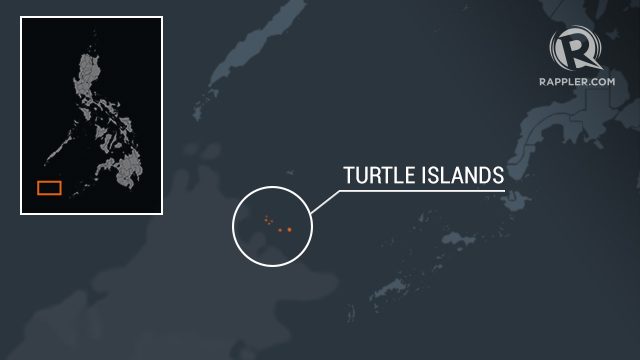SUMMARY
This is AI generated summarization, which may have errors. For context, always refer to the full article.

MANILA, Philippines – Did you know that on this day in 1996, the Philippines and Malaysia entered into an agreement to declare the first transboundary protected area for marine turtles in the world?
On May 31 of that year, the two countries signed a memorandum of agreement to establish the Turtle Islands Heritage Protected Area (TIHPA), to guarantee the continued existence of marine turtles and their nesting sites in the Turtle Islands.

The Turtle Islands is a group of 9 islands located in the Sulu Sea, about 1,000 kilometers southwest of Manila and 40 kilometers north of Sandakan, Sabah. Six of the 9 islands are in the Philippines, while the other 3 lies in Malaysia—all adjacent to the international treaty that separates the two countries.
The 6 islands in the Philippine side (Boan, Lihiman, Langaan, Great Bakkungan, Taganak, and Baguan) covers around 308 hectares of land, and is clustered as one municipality under the province of Tawi-Tawi in Mindanao. It has a population on 3,772 people as of the 2010 census.
Why protect the area?
The islands are visited by more than 2,000 nesters every year, making it a major nesting ground for marine turtles—including green sea turtles and hawksbill turtles.
Turtle eggs are culturally and economically valued in Tawi-Tawi. This has resulted in excessive egg collection in the area, especially in Baguan. With the help of the military and donations from other organizations such as World Wildlife Fund-Philippines, the Pawikan Conservation Project (PCP) is able to ensure that its turtle conservation work remains unobstructed.
Only 10 remaining marine turtle nesting sites were recognized as of 2014. In response to the decline in the world’s population of marine turtles, the International Union for Conservation of Nature decided to declare all marine turtle species as endangered.
The Turtle Islands is now the only major natural nesting ground for Green Sea Turtles in the entire Southeast Asia.
Despite difficulty in reaching the area, it still features turtle watching lounges and elevated wooden boardwalks for tourists who wish to observe the turtles without negatively affecting their habitat.
According to the ASEAN Biodiversity Information Sharing Service, the following are some of the TIHPA’s areas of concern:
- High incidence of intrusion in the vicinity of the Taganak Island
- Illegal fishing
- Jump off point for smuggling
- Jump off point for illegal migrants from Sabah
What else can we see there?
Aside from its Green Sea Turtles and other marine nesters, the Turtle Islands is home to 34 avian species, 27 coral species, 128 fish species, 62 species of marina flora.
The Turtle Islands also participates in the environment programs of the Brunei Darussalam, Indonesia, Malaysia, Philippine-East ASEAN Growth Area (BIMP-EAGA). These programs include Tawi-Tawi’s ecotourism projects aimed at protecting endangered marine species and sustaining community-based tourism enterprises. – Rappler.com
Sources: Official Gazette of the Philippines, OneOcean.org
Alexandra Bichara is a Rappler intern.
Add a comment
How does this make you feel?
There are no comments yet. Add your comment to start the conversation.